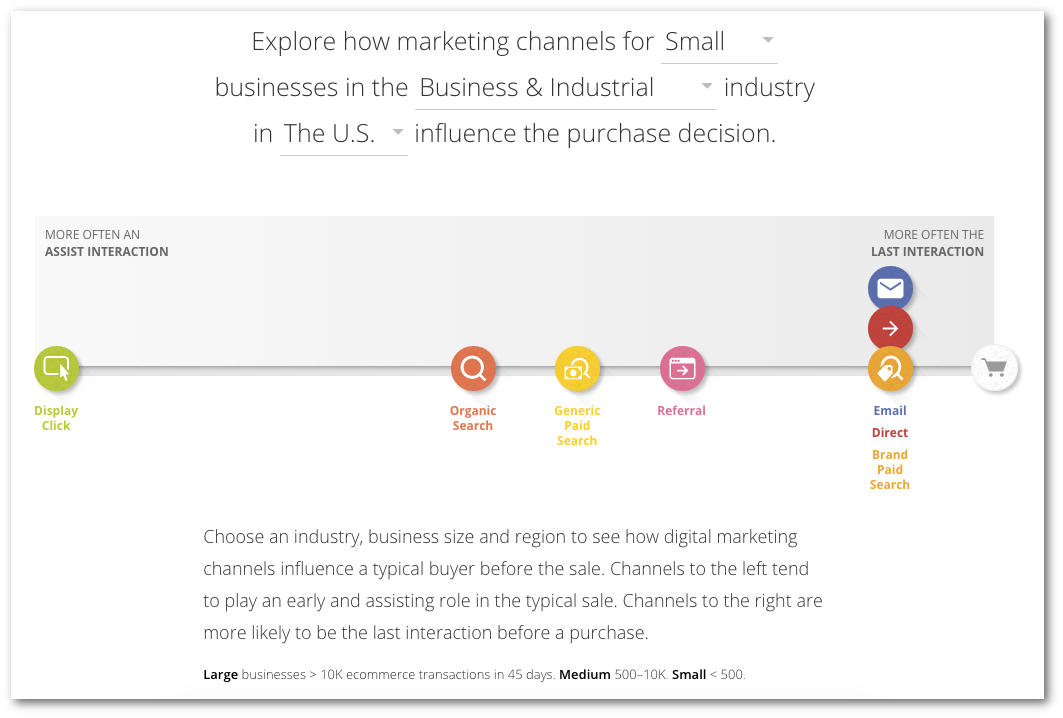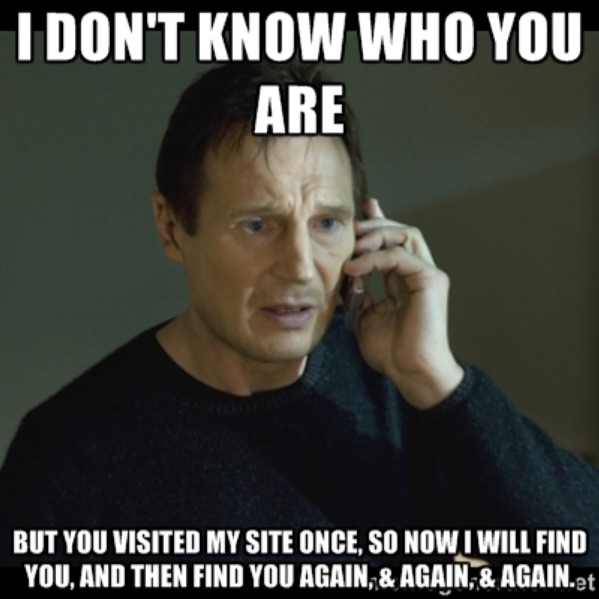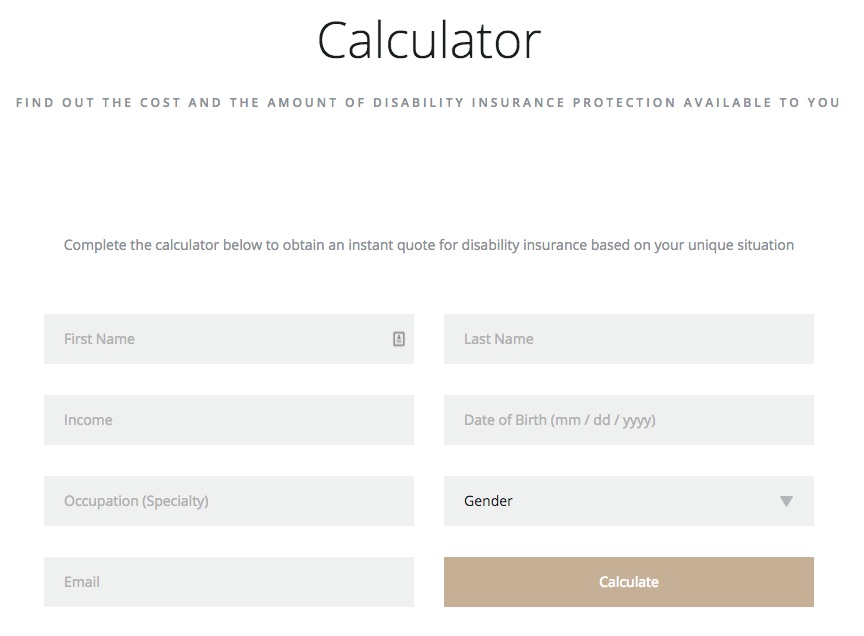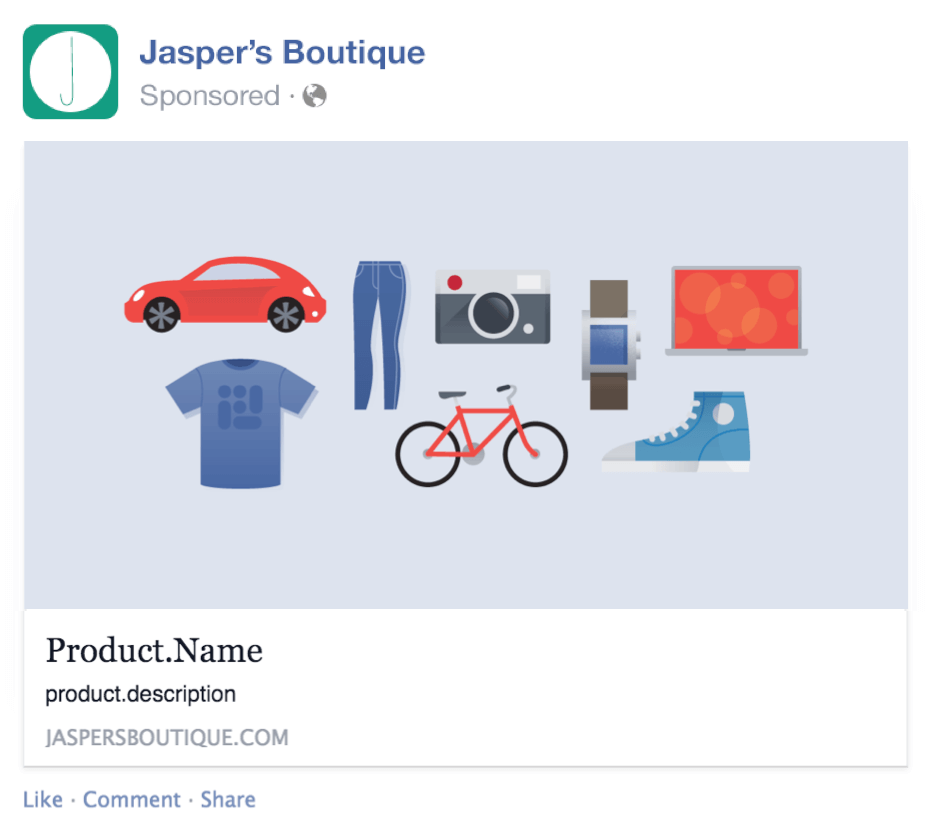Everyone’s short on resources.
You got a tight budget. Limited staff.
But what’s really in dire need, is more time.
There’s only so many campaigns you can create, or issues to respond to, without working yet another weekend.
Simply keeping up is half the battle.
The good news is that some of the best marketing tactics can also be automated, allowing you to set-and-forget while the tools take care of the rest.
Here are three ways that time-strapped companies can better leverage their promotional efforts through using remarketing ads, marketing automation, and dynamic product ads.
Step #1. Remarketing for New Website Visitors
Only a tiny minority – like single digits tiny – are going to purchase when they hit your website.
Using powers of extreme deduction, that means MOST people hitting your website (like the other 90%+) aren’t spending a dime.
Add to that, at least half of all customer interactions are now multi-event (and often multi-device) journeys. People rarely convert on their first visit, after seeing a PPC ad for the first time.
Instead, they might first find out who you are months in advance after seeing a display ad or clicking a referral link. They might have even done a quick search for a problem, looking for some basic information.
All that stuff happens before they start shopping around, evaluating their alternatives to purchase. (Google’s Customer Journey to Online Purchase tool can replicate this for your own business.)

This nonlinear process becomes disjointed if you have an extremely commercial website. One that focuses a lot of attention and pages of content about your products and services, with little else to offer those people not yet aware of a need for your stuff quite yet.
In other words, great stuff for people already close to the ‘Last Interaction’ highlighted above. Yet nothing for all the other ones who might be ‘earlier’ in the marketing funnel.
But what about… everyone else?
There’s no Plan B. There’s nothing for people who might be interested in what you have to offer, but aren’t ready to convert just yet for whatever reason.
That’s where remarketing can come in, giving people a reason to come back to your site with lesser offers (or micro conversions), nurturing them along until they’re ready to make the ultimate decision.
Setting these up for the first time is fairly self-explanatory. You can create a new campaign directly in AdWords, make sure you’ve got the right tracking pixel in place, and then start work on the ad creative for all the different sizes Google offers.
I was going to show a few screenshots, but honestly that’s all it takes. So here’s your obligatory image instead:

Being so simple and easy to create, it’s hard to believe that it’s still an underused tactic. Especially with costs commonly ~46% less than standard advertising too. What’s even more compelling, is that the more retargeting campaigns used, the more conversion rates go up.
Wait. Why?
It’s a nudge; a gentle reminder that you’re still there and have something that they need. (Not your product or service at this point necessarily, but a solution to their problem nonetheless.)
You can even try ‘Super Remarketing’, which is a tongue-in-cheek concept from Larry Kim that describes overlaying demographic and behavioral-based information from Facebook (or even Twitter) to your existing site visitors.
Starting with the people who visited your site in the last 30-60 days is a good start, because you should (hopefully) be fresh in their minds. However combining that with ad creative designed to match their demographic stuff (like their job titles) or behavioral (like their interests) could be an extremely powerful – and automate-able – way to drive new leads.
But what are you supposed to do with them?
Automate your follow-up too of course.
Step #2. Marketing Automation for New Leads
Most people here are familiar with marketing automation (and it’s power to increase sales by almost 34%).
Yet most, like 85% of B2B marketers (!), are unhappy with their execution.
When done correctly (and combined with earlier efforts including remarketing ad campaigns), marketing automation is your best-bet for increasing lead generation on autopilot.
Here’s how.
My company worked with a client who relied heavily on Google AdWords for lead generation. Sites like this generally perform well with direct-response advertising, because you’re purposefully attracting people who’re close to making a decision. But they also naturally had a huge percentage of people leaving the site without giving them anything.
We hypothesized that these people were leaving the landing pages and Quote Request form because they weren’t quite ready to speak with a sales rep just yet. They were interested in what the company had to offer, but were still looking for basic information prior to making their ultimate decision.
So we created a simple calculator that would provide them with a few fast facts (like what they’re going to get and what it’s going to cost), without the need to ‘be sold’.

After entering their basic information, the person would receive customized results specific to them (while also entering an automated workflow, which we’ll touch on in the next step).

Now we have something interesting and compelling to promote with remarketing ads, targeting those people who were just on the website but didn’t convert.
And best of all, we received some interesting information to set-up new automated email workflows.
Not just a name or email address, which doesn’t give us much. But also more important qualifying information that’s critical to determining if these people are good potential leads and how to prioritize them.
We can create not just a single, standard email workflow now, but a few sophisticated ones that combine some of a person’s unique characteristics to truly personalize the context of each interaction.
(That’s a fancy way of saying a person’s more likely to open and click your email because it’s better – more timely, relevant, and personal – than all of the other crap in their inbox.)
Most popular tools can run these campaigns for you. HubSpot is awesome (yet expensive). So I also recommend Autopilot and MailChimp for budget conscious companies.
Next you can brainstorm or outline a series of emails to nurture these people over time. For example, pick an interval first (like every 2 days or every week). Then choose a sequence of message topics that will start with supporting their initial request, slowly building to soft sells or even hard sells if appropriate.
For example, if someone just used your calculator (or downloaded your eBook, attended your webinar, etc.), send them to the next logical step in your funnel.
Maybe that’s a case study or a pricing page. It might even be directly to a product page that can deliver the result that your email promised.
Whatever the case, just create a simple cadence to start and repeat for a few days.

Once you’ve got the basic structure down, you can branch off based on how people do (or do NOT) interact with you.
For example:
- Did they attend the webinar you linked to in Email 1? Remove them from this list and add them to another to make sure they attend it!
- Did they purchase the product you described in Email 3? Remove them from this list and add them to a New Purchases one to (a) upsell or (b) get them to recommend you
- Did they receive 10 emails but fail to even open them? Send them a break-up email unless they start responding.
As you can see, the possibilities are endless.
Start with the most obvious or basic site interaction. And then continue to build out overtime, adding in complexity where appropriate to completely automate how strangers are nurtured until they’re ready to purchase.
Step #3. Dynamic Product Ads for Purchase-Ready Prospects
‘Good’ leads are ones that view your key pages.
They view your pricing pages, they view case study pages, and they view your product pages.
These people are checking you out; dipping a toe into the possibility of initiating a new relationship with you.
When these people leave your site, it’s tragic. They were so close.
You can (and should) use marketing automation campaigns if possible to continue following-up with these people to get them back to your site (or on the phone).
You can (and should) also use remarketing campaigns to remind them of what they’re missing.
Fortunately, you can also use remarketing on steroids with Facebook’s Dynamic Product Ads.
In a banner blind world, where average click throughs are a dismal sub 1%, relevance and timing win.
These dynamic product ads are like a cross between marketing automation and remarketing ads, leveraging your product database and an ad ‘template’ to show people specific ads on Facebook for products they just viewed on your website recently.
Digital advertising automation is still in it’s infancy, but this is pretty damn close.
For example, Jessica Alba’s The Honest Company saw a 34% increase in click through rates. Which ain’t bad. But it’s even more impressive when they ALSO saw a 38% reduction in cost per purchase at the same damn time.
That’s why those buzzwords like ‘relevancy’ and ‘timing’ are important. When done right, they = better results for less.
Get started by creating a product catalog in an XML or CSV file, similar to the one below (or simply use your Google Shopping product feed from Shopping campaigns).

Get yo’ tracking pixels on fleek to track peeps who:
- View Content
- Add to Cart
- Purchase
If you’re keeping score at home, those are three different ‘stages’ you can personalize ads to now.
(The Pixel Helper Chrome Extension can help if you’re having issues with setup.)
The next step is to begin setting up an standard ad ‘template’ that will be customized dynamically. Here’s what that looks like:

Once you’ve activated these campaigns, each ad will be customized with the content from your product feed based on whatever criteria each person meets (i.e. previously viewed content, added product to cart, etc.).
Now Let’s Put it All Together
Standard remarketing campaigns with Google, marketing automation, and Facebook’s Dynamic Product Ads are each incredibly powerful tools on their own.
They allow you to customize marketing messages on the fly, without the need for you (or your team) to personally do anything (besides monitor results and adjust over time).
But the REAL value is in integrating these three concepts at the same time, creating a seamless customer experience in a multi-channel world.
For example, cart abandonment strategies now take on a whole new meaning.
Sure, send the standard, “Hey, you forgot this product in your cart” email. But combine it with an automated ad of that specific product on Facebook. And support these two activities with branded messages as they browse around Google’s omnipresent ad network.
Marketing tactics, in isolation, can provide incremental improvements. But together, they have the power to deliver significant benefits.
Especially when some of the most powerful can be set on autopilot too.
About the Author: Brad Smith is a founding partner at Codeless Interactive, a digital agency specializing in creating personalized customer experiences. Brad’s blog also features more marketing thoughts, opinions and the occasional insight.